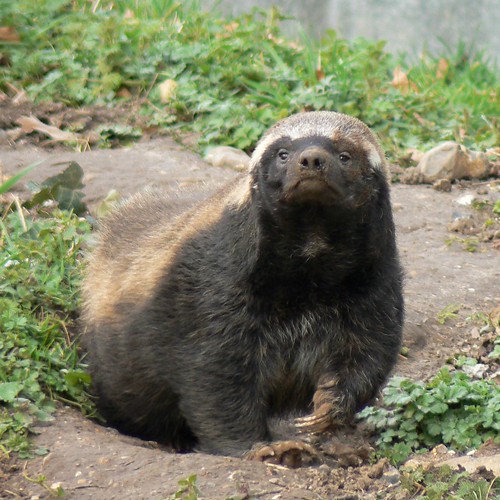 [1]
[1]
Hailing from the unforgiving Kalahari Desert, the Honey Badger, Mellivora capensis, is “the most fearless animal” in the Guinness Book of World Records and “pound for pound the world’s most fearsome land mammal” in the magazine Scientific American. True enough, they decimate beehives for larvae (hence the name ‘Honey Badgers’), devour venomous snakes and even kill larger potential predators. Surely, honey badgers are able to display aggressive behavioral tendencies towards other species due to physical traits like big front claws and thick, loose hide. But lo and behold, as if those overwhelmingly powerful traits were not enough, honey badgers seem to posses an uncanny ability that can be seen starting from the third minute of the video below.
[2]
Yes, that uncanny ability is the resistance towards extremely toxic venoms from snakes. This further explains honey badgers’ almost insatiable appetite for snakes — which constitute more than half of their food consumption during summer — in providing high-energy meals without much foraging effort.[3]
So, are honey badgers so invincible till the extent of virtually bearing no costs during foraging? Fortunately this is not the case. They are actually vulnerable to predation by leopards[4] and lions because of their relatively slow movement speed and become oblivious to the surroundings during digging. As such, despite the status of “most fearless animal”, honey badgers would prefer to avoid close contact with predators.[5] Still, any predator will think twice about messing with the ferocious honey badger as the battle is certainly no walk in the park.
References
[1] “No, not a Bond girl. Seen at Howletts Wild Animal Park, Kent”, by Mark Bridge. Mark Bridge Galleries: Flickr. URL: http://www.flickr.com/photos/markbridge/3337947234/ (accessed on 29 Mar 2010).
[2] “Wildlife Collection 100 – Snake Killers 2of5 – Honey Badgers Of The Kalahari – 2001,” by Just4FunAndLOL YouTube Channel, 05 March 2010. URL: http://www.youtube.com/watch?v=MLPYRLj0rUk (accessed on 29 Mar 2010).
[3] “Honey Badgers,” by Colleen and Keith Begg. National Geographic Magazine, September 2004. URL: http://ngm.nationalgeographic.com/ngm/0409/feature6/fulltext.html (accessed on 29 Mar 2010).
[4] “Wildlife Collection 100 – Snake Killers 3of5 – Honey Badgers Of The Kalahari – 2001,” by Just4FunAndLOL YouTube Channel, 05 March 2010. URL: http://www.youtube.com/watch?v=1gZhPtaWsPY (accessed on 29 Mar 2010).
[5] Begg, Colleen Margeret, 2006. Feeding ecology and social organisation of honey badgers (Mellivora capensis) in the southern Kalahari. pp. 107-147.
